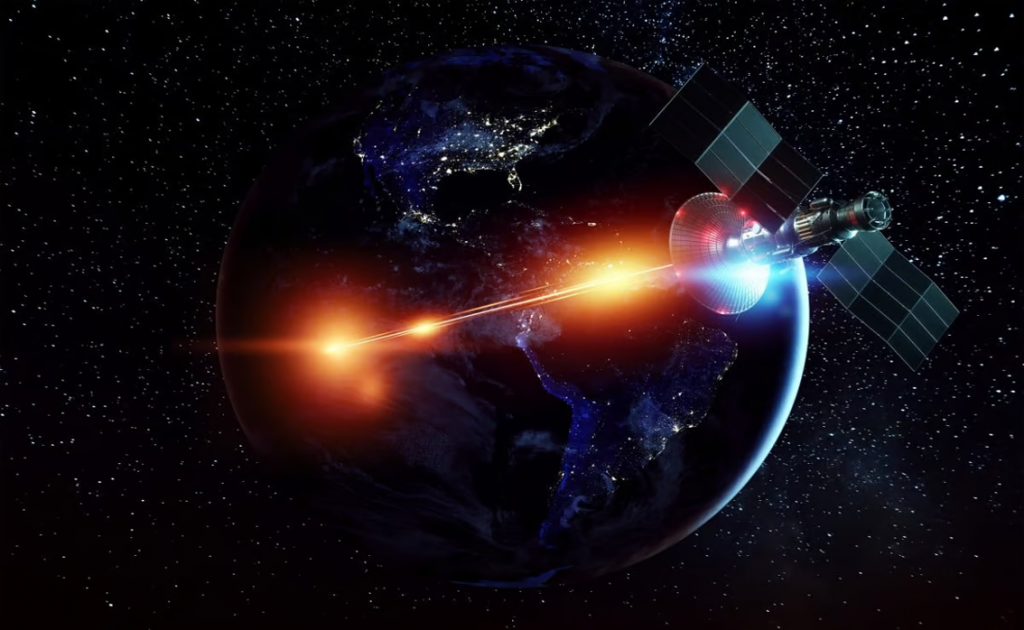In the realm of futuristic weaponry, a concept once stirred the imaginations of strategists and sci-fi enthusiasts alike—an image known as “rods from God.” Born during the Cold War, this audacious idea aimed to rain havoc from the heavens, involving huge tungsten rods hurtling from orbiting satellites to unleash kinetic energy upon impact. However, the grandeur of this space weapon’s potential might have been exaggerated, as a recent study unveils unexpected limitations.
The concept of the hypersonic tungsten rod can be traced back to the aspiration of propelling mammoth tungsten rods from celestial heights, crashing into targets at Mach 10 speeds, and emulating the devastation of nuclear explosions. The moniker “rods from God” draws inspiration from biblical plagues of destruction descending from the heavens. Yet, despite this gripping imagery, the concept has been consigned to theories, failing to materialize into actual warfare.
Now, enter the scene: scientists from China’s North University, spearheaded by Fu Jianping, a mechanical and electrical engineering luminary at the institution’s intelligent weapon research institute. The team embarked on a daring journey to illuminate the plausibility of this weapon. Propelling tungsten rods to breathtaking velocities of up to 3 kilometers per second (1.86 miles per second), nearly nine times the speed of sound, Fu’s team harnessed the extraordinary density and hardness of tungsten, coupled with its sky-high melting point. These attributes position it as an ideal material for kinetic energy weapons, where velocity and mass reign supreme.
Upon impact with a military concrete stronghold at breakneck speeds, the tungsten rod ignites a maelstrom of kinetic energy, culminating in a scorching shockwave that melds and compresses the target material, metamorphosing it into plasma. This plasma, a haven for electric currents from the shockwave, kindles a magnetic field that propels it even further, birthing a searing plasma jet. This very jet corrodes the target material while inexorably wearing down the tungsten rod under the crucible of extremities.
The outcome: a significant reduction in the tungsten rod’s mass to the point where an entire rod might disintegrate upon a Mach 8 collision.
Fu’s team discerned a fascinating trend in their study—a penetration depth initially ascended with the projectile’s velocity, which ultimately plateaued and regressed. Ultra-high speeds bore no advantage in terms of penetration depth, leading to an intriguing paradox. The fulcrum of the weapon’s destructive prowess comprises factors such as kinetic energy, velocity, mass, and the properties of the target material. A tantalizing revelation surfaces: the frontiers of launch technologies, exemplified by hypersonic vehicles and rail guns, could usher in a new era for the utility of tungsten rods as kinetic energy armaments.
While the “rods from God” narrative remains entrapped in logistics, politics, and strategy, China’s earnest consideration of this concept is indisputable. An illuminating Chinese experiment involving a hypervelocity kinetic energy projectile striking a desert terrain has uncloaked uncertainties. The efficacy against concealed targets and the labyrinthine complexity of such weaponry comes to the forefront.
Essentially, the “rods from God” may not be the harbinger of unparalleled annihilation as envisioned. Nevertheless, this research paints a vivid picture of the interplay between various factors dictating the real-world efficacy of kinetic energy weapons.
As technological bounds are pushed, the fabric of space-based weaponry could metamorphose, breathing life into a concept that once dwelt solely within the tapestry of science fiction.

